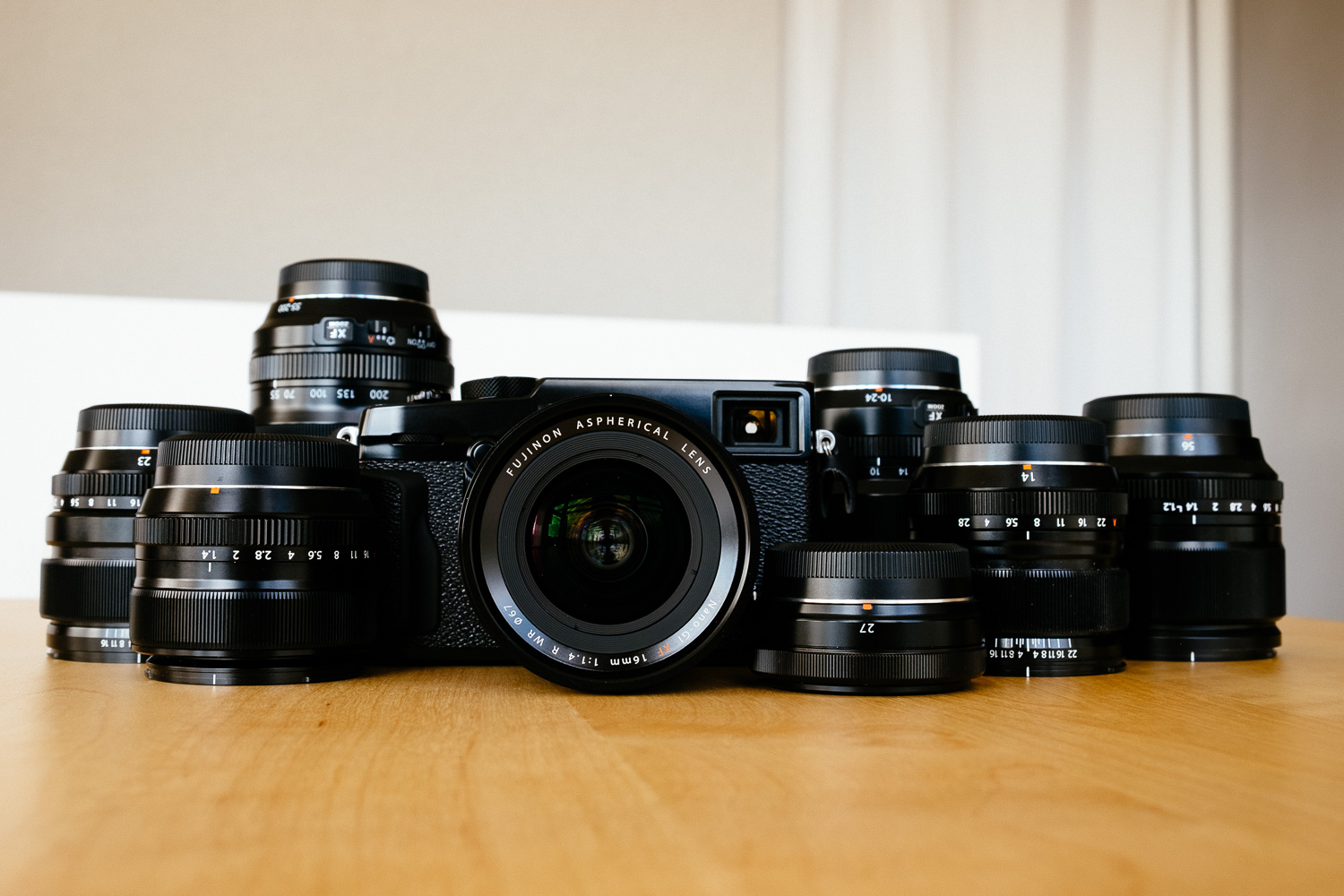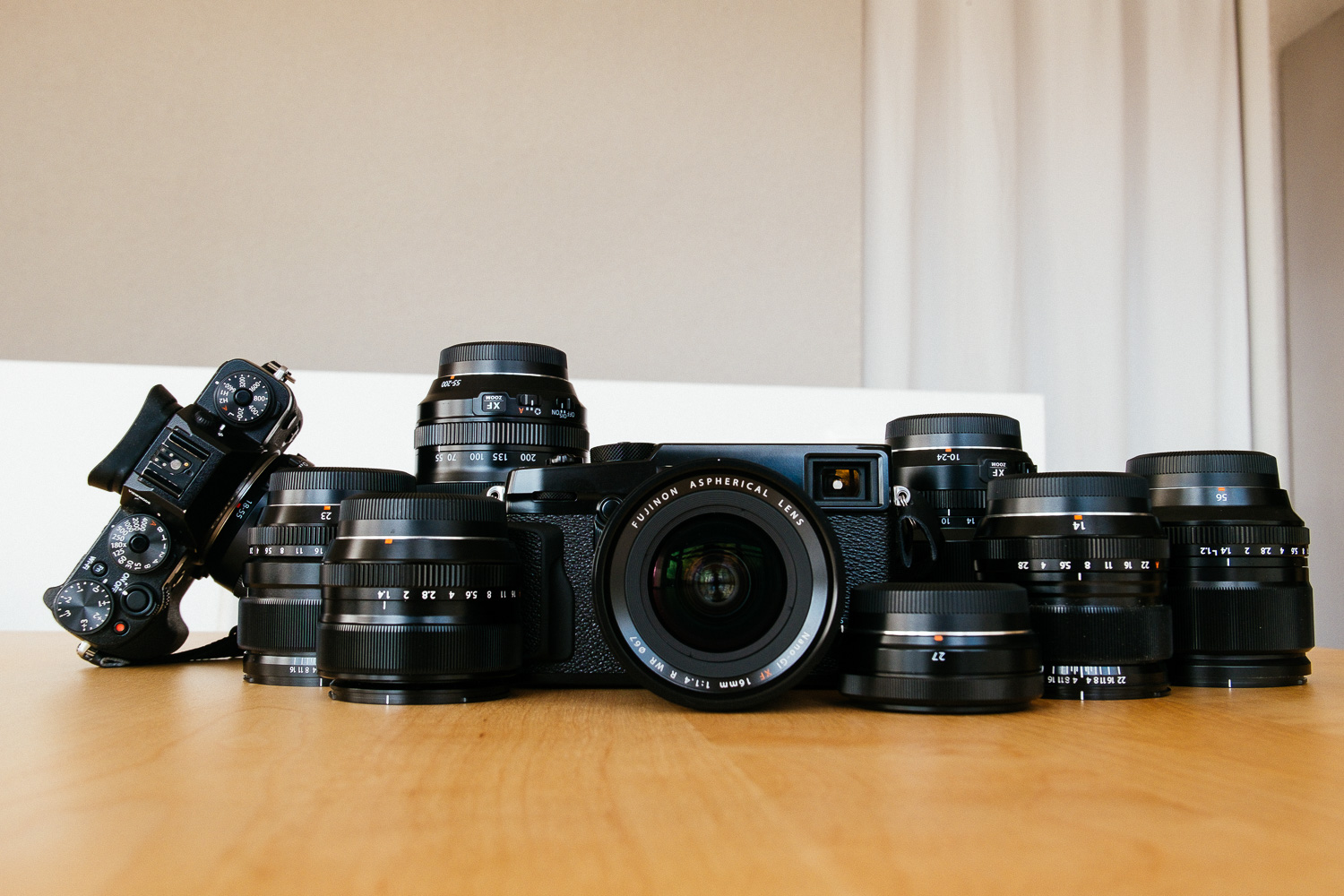 FUJIFILM X-T1 (46.3mm, f/16, 1/1 sec, ISO200)
FUJIFILM X-T1 (46.3mm, f/16, 1/1 sec, ISO200)
Got a new camera. Again! But it is not just another camera. This one is different. Here are my first impressions.
When I got myself a second hand Fuji X-Pro 1 for Christmas 2012 I had no idea that this purchase would change everything. At least for my photography. Since then I got dragged into the world of Fuji. Excellent high ISO, Auto-WB and colors – seems that Fuji cameras are easy to love but that’s not true.
Especially the X-Pro 1 with its first firmware was far away from being perfect. Slow AF, no Auto-ISO menu that allows you to set a minimum shutter speed are just two examples. But I found some workarounds and after some time Fuji finally updated the firmware which transformed the camera.
But I loved shooting with it from the very first second. I loved how the camera handled and also how it looked. To me the best looking camera ever made but most important the shooting experience is second to none. Much more involving than any other camera on the market. I later moved to the X-T1 which improved on speed and offered a far better viewfinder but now I’m back shooting with an X-Pro.
What’s new?
I like the iPhone 6S commercial. “The only thing that has changed is everything”. Of course this is just pure marketing talk from Apple but it really works for the X-Pro 2. While the camera looks practically the same (Thank you Fuji!) it is completely different inside and it seems that every single detail has been improved. Apart from the viewfinder switch that still feels cheap. Maybe now it stands out even more than it did before because the Fuji X-Pro 2 feels more solid than its predecessor.
Here are the biggest improvements: (compared to the X-Pro 1)
- the AF joystick
- AF that works down to EV -3 now instead of EV -1
- the new EVF
- the new shutter sound
- three Auto-ISO settings
- the overall speed – it’s much faster in operation
- it’s heavier
- there is a second memory card slot
- and finally a new sensor
Are there any areas where they have made a step back?
- battery life – and it’s a big step
Any bugs?
- my camera went back to its factory settings when I changed the battery (it only happened on the first day)
And now in more detail:
I start with the only true negative aspect of the camera to get it out of the way. I like the idea that a camera maker sticks to one battery. It makes life simple if you use cameras of different generations. Fuji uses the same battery since the X-Pro 1 came out 5 years ago. No matter which Fuji X system camera you shoot the battery and charger is always the same. That’s very convenient but I really wished that Fuji would have given the X-Pro 2 a new battery. The old battery is simply not powerful enough anymore. The processor in the new camera is much faster and the EVF is much brighter. As a consequence the X-Pro 2 happily munches through its batteries like Homer Simpson through a box of donuts. I get only about 200 images per charge. Not good! In addition to a normal and a high performance mode the camera now also offers an eco-mode. Maybe I should try that.
The AF joystick transfers the shooting experience. I know that many people miss a tilt screen and maybe a touch screen but I’m still using the viewfinder and I love to select the AF area with the 8-way controller on the back. I hit the four way controller a couple of times because I was used to change the AF point that way on my X-T1 but it’s getting better.
The EVF has improved a lot. Not so much in size but in resolution and frame rate. It also gets very bright now in bright light where you could almost confuse it with a real viewfinder. It is really that good. Initially I was disappointed because it is much smaller than the one in the X-T1 and it also seemed to be darker but that is only because indoors in low light it stays darker to mimic what you see with your eyes. I kind of like that. What I don’t like is that the edges of the frames are harder to see with my glasses on. Precise framing was easier for me on the X-T1.
At the end a camera from Fuji that finally feels snappy. It feels much faster than the X-T1 too. To magnify an image or scroll around in it fells like on a pro DSLR. Very nice! AF is not much faster though. I don’t see a lot of difference compared to the X-T1. The X-Pro 2 is still no action camera but its AF now works in very low light. It also has a faster shutter capable of 1/8.000s and a sync speed of 1/250s. This is very handy because there are still situations where you can’t use the electronic shutter. Another thing changed because of the faster shutter. The shutter sound. And that’s not a small thing The shutter sound is truly great. It feels both soft and fast. Much better than on the one on the old camera or on the X-T1. Sometimes I push the knob just to hear that sound.
The X-Pro 2 is heavier than the X-T1 and also heavier than the X-Pro 1. To save weight was one of my main reasons to buy a mirror less camera but a certain heft is no disadvantage. It balances more nicely with the slightly heavier lenses now.
And there is a second card slot. I never had one in any of my cameras and I never missed it. Nor has a memory card ever failed on me in 17 years of digital photography. But the second card slot might be important to some of you.
 FUJIFILM X-T1 (25.4mm, f/8, 1/7 sec, ISO200)
FUJIFILM X-T1 (25.4mm, f/8, 1/7 sec, ISO200)
A new sensor – finally!
Not that there was something wrong with the old one. The sensor or better its output was one of the main things that attracted me to Fuji. But times are changing and more resolution is not a bad thing at least if there are no drawbacks in other areas like noise or dynamic range. The good news: High ISO noise and dynamic range are as good as on the X-T1. The bad news: High ISO noise and dynamic range are not better than on the X-T1. I guess we all have become spoiled kids. Correction: I shot both cameras side by side recently and the X Pro-2 has a better dynamic range. The difference was very obvious. It did not blow highlights like the X-T1. I also think that the noise in very high ISO shots look much nicer.
But the plus in resolution is obvious. Fuji finally gives me an image that is better than what I get from my Canon 6D. High ISO is still better on the Canon but dynamic range is far superior on the Fuji. As a consequence I do no longer own a DSLR. I shoot SLRs since I was 12 years old. I got my first DSLR in January 2002 (a second hand Nikon D1) and switched to full frame in 2007 (Canon 5D). Now I finally completely switched to mirror less and also back to APS-C. I don’t shoot action or sport. I’m not a wedding photographer who needs DOF control on a standard zoom and I don’t care about flash. Seems like the Fuji X system is made for me.
But its not only the camera with its great sensor and the fantastic shooting experience. The main reason for me to finally switch to Fuji are the lenses. They are just fantastic! Even the kit lens is great. The zooms are very good and most of the primes are outstanding. The lenses are much smaller than the ones on my Canon but they are just as good and some are even better. Same or better image quality in a much smaller package. Just perfect for travel photography. Take a look at the picture below. It shows my whole Fuji gear. Two camera bodies, 6 primes and 3 zooms. All this gear fits into my Think Tank Street Shooter. A small back pack just big enough to hold a Canon 6D with the 16-35 IS, the 24-70 II and the 70-200 II.
There is a line from another great Neil Young song that comes into my mind. “Someday you’ll find everything you’re looking for.” I think I finally found what I was looking for.
PS: Just in case you miss shots taken with the X-Pro 2. I will post plenty of them soon from my first real outing.

